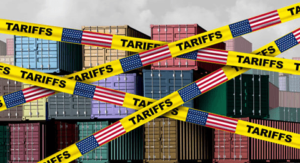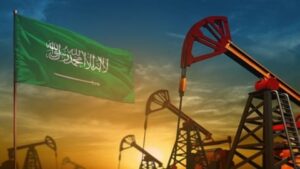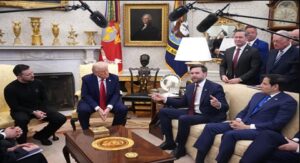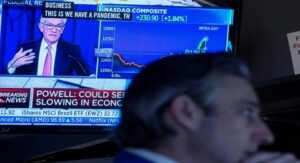
Saudi Arabia’s Industrial Strategy: 7 Points Analysis
Saudi Arabia’s Industrial Strategy is no longer just about vision—it’s about momentum. With global giants like Microsoft, Foxconn, and Lucid setting up shop, and record investments flowing into green energy, tech, and manufacturing, the Kingdom is rewriting its economic future.
Driven by geopolitical agility, state-backed capital, and a new focus on export-led growth, Saudi Arabia is seizing a once-in-a-generation chance to break free from oil dependency. The world is watching—and this time, it might actually work.
Saudi Arabia’s Industrial Strategy
Saudi Arabia is making another big push to diversify its economy beyond oil—and this time, it might actually work. Over the past three years, the Public Investment Fund (PIF) has signed major deals with global companies to set up manufacturing facilities across the Kingdom.
These developments come as Gulf countries like Saudi Arabia and the UAE are leveraging their wealth, infrastructure, and strategic geography to claim a larger role in global value chains.
Below are seven reasons this new industrial strategy could finally deliver real results.
Table of Contents
1. Stronger Foundations
Unlike previous attempts, Saudi Arabia’s industrial strategy today is backed by major improvements in infrastructure, governance, and project delivery. From new industrial zones on the Red Sea coast to advanced logistics networks, Saudi Arabia is becoming more attractive for global manufacturers.
Labor costs remain relatively high, but automation and skilled migration are helping to close the competitiveness gap. These factors are correcting the historical disadvantages that led companies like Toyota to walk away in the past.
Read More: Will Trump’s Tariffs Accelerate America’s Economic Decline?
2. Rise of State Capitalism
Saudi Arabia’s industrial strategy, along with that of the UAE, is embracing a powerful state-capitalist model. Through entities like the PIF and Mubadala, Gulf governments are not just funding growth—they’re actively shaping it.
These sovereign funds are building or acquiring firms in defense, tech, renewables, and logistics, turning them into preferred partners for multinationals. This model provides foreign investors with stability, speed, and access to local networks—key ingredients for large-scale industrial success.
Read More: Is Trump’s Industrial Policy More Continuity Than Disruption?
3. Geo-Economic Advantage
As the world shifts toward multipolarity, Gulf states are taking advantage of growing tensions between the West, China, and other blocs. Saudi Arabia’s industrial strategy is closely aligned with this new reality, using geopolitical opportunities to fuel its diversification efforts.
The Gulf Cooperation Council (GCC) is negotiating trade deals with the EU, UK, and China, and it plays a central role in initiatives like BRICS+ and de-dollarization. This geopolitical balancing act is giving countries like Saudi Arabia more leverage to attract manufacturing investment and position themselves as neutral hubs for global trade.
4. Green Energy Edge
Renewable energy is no longer a future concept in the Gulf—it’s happening now. Thanks to abundant sunlight and falling solar panel costs, Saudi Arabia and the UAE are rapidly expanding solar infrastructure. Saudi Arabia’s industrial strategy is leveraging this momentum to make green manufacturing not only possible but profitable.
Two of the world’s largest solar firms—LONGi and JinkoSolar—are already building panel assembly lines in Saudi Arabia. These efforts are also laying the groundwork for a green hydrogen export market, with the world’s largest plant scheduled to open in 2026.
Read More: Economic Impact of Crime: A Study in Latin America and the Caribbean
5. Digital & AI Growth
The Gulf is also emerging as a regional digital powerhouse. Saudi Arabia’s industrial strategy plays a key role in this shift, with Microsoft investing $1.5 billion in the UAE’s G42 and Lenovo launching a Saudi factory, as the region attracts next-gen tech firms.
Fueling this growth are cheap renewable energy, abundant land, and high-speed data infrastructure—all critical for AI and cloud data centers.
As AI adoption accelerates, demand for low-cost, green-powered tech infrastructure is rising—and the Gulf is well-positioned to deliver it.
6. Manufacturing Comeback
Manufacturing is making a real comeback in Saudi Arabia. Saudi Arabia’s industrial strategy is driving this transformation, turning what once seemed impossible due to cost and scale into a reality.
The Red Sea coast is emerging as a hub for electric vehicle production, with companies like Foxconn, Hyundai, and Lucid building plants to serve markets across Africa and Europe.
This surge is not limited to automotive; other sectors such as defense, shipbuilding, and electronics are seeing joint ventures between Gulf firms and multinational giants.
Read More: World’s Factory: How Super Power China Is Slowly Losing Its Position
7. Risks & Rewards
Despite the progress, challenges remain. The global backlash against industrial policies, especially in the US and EU, could limit the export potential of products made in the Gulf—even if they’re not made in China. Saudi Arabia’s industrial strategy also faces the risk of overextension; with so many megaprojects underway, capital and management capacity could be spread too thin.
Still, the global trade environment is increasingly fragmented, and middle powers like Saudi Arabia may benefit by offering a neutral, well-funded alternative to Western or Chinese supply chains.
Bottom Line
Saudi Arabia’s industrial strategy is not just about reducing oil dependence—it’s about reshaping the country’s role in a rapidly evolving global economy. By aligning sovereign investment with geopolitical opportunities, renewable energy, and emerging tech, the Kingdom is taking its boldest step yet toward long-term, export-driven growth.
For decades, diversification was a goal that remained out of reach. This time, with better tools, sharper focus, and a more favorable global context, Saudi Arabia and the broader Gulf may finally be ready to build a post-oil industrial future.





